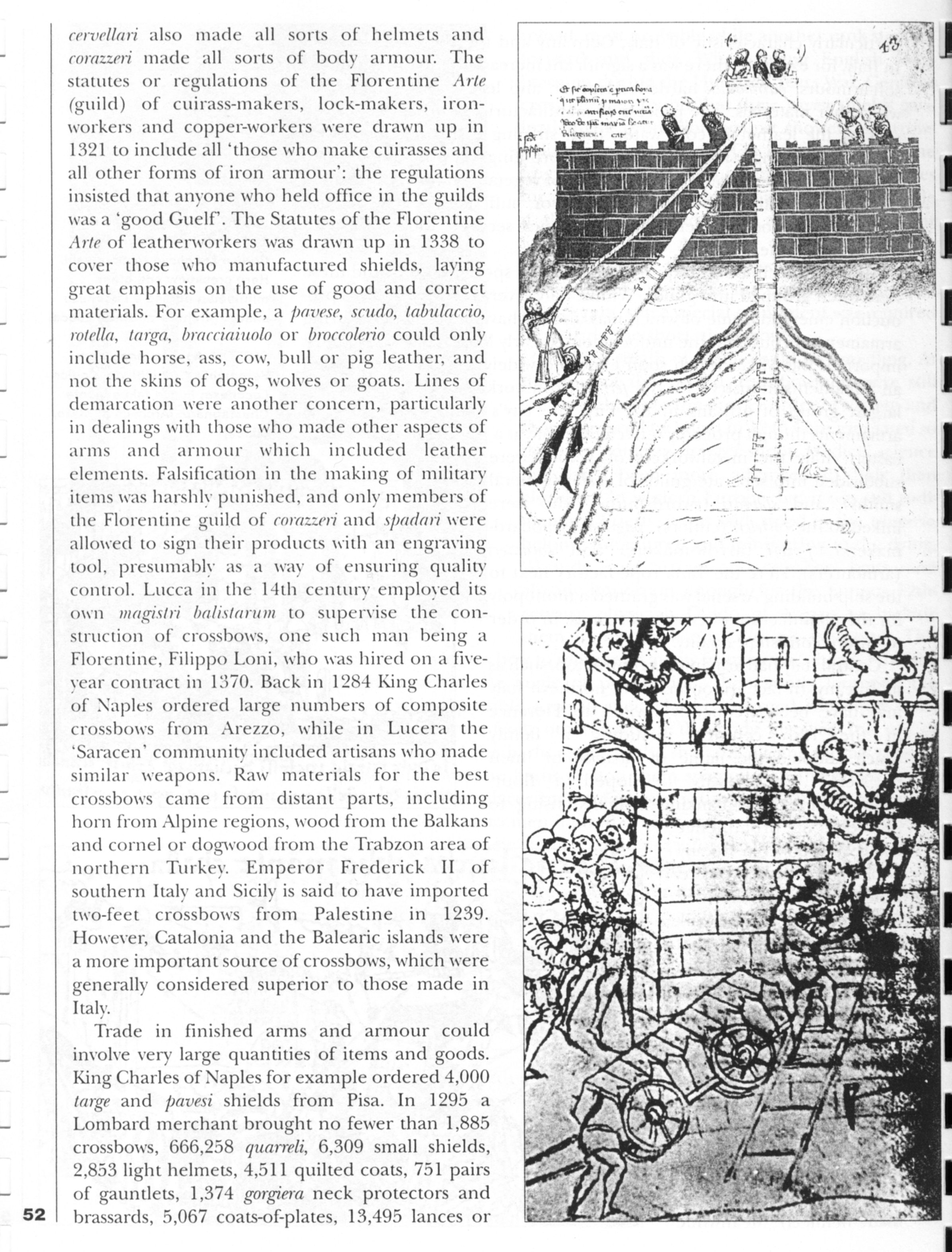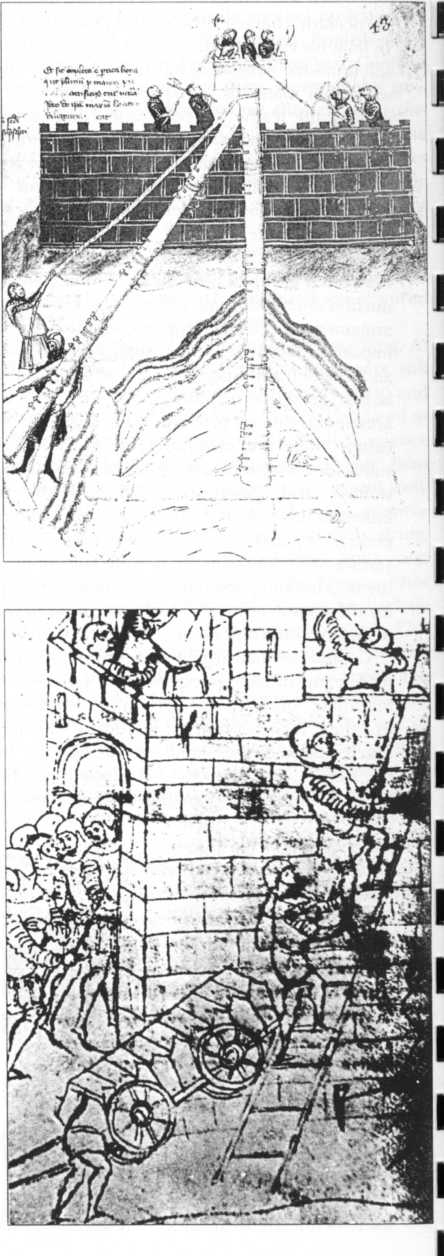68483 w25R

ceruellari also madę all sorts of helmets and corazzeń madę all sorts of body armour. The statutes or regulations of the Florentine Arie ('guild) of cuirass-makers, lock-makers, iron-workers and copper-workers were drawn up in 1321 to include all ‘those who make cnirasses and all other forms of iron armour’: the regulations insisted that anyone who held office in the guilds was a ‘good Guelf’. The Statutes of the Florentine Arie of leatherworkers was drawn up in 1338 to cover those who manufactured shields, laying great emphasis on the use of good and correct materials. For example, a pauese, snuło, labulaccio, rolella, targa, bracciaiuolo or bmccolerio could only include horse, ass, cow, buli or pig leather, and not the skins of dogs, wohes or goats. Lines of demarcation were another concern, particularly in dealings with those who madę other aspects of arms and armour which included leather elements. Falsification in the making of military items was harshh punished, and only members of the Florentine guild of corazzeri and spadari were allowed to sign their products with an engraring tool, presumably as a way of ensuring quality control. Lucca in the 14th century employed its own magislri balistarum to supervise the con-struction of crossbows, one such man being a Florentine, Filippo Loni, who was hired on a five-vear contract in 1370. Back in 1284 King Charles of Maples ordered large numbers of composite crossbows from Arezzo, while in Lucera the ‘Saracen’ community included artisans who madę similar weapons. Raw materials for the best crossbows came from distant parts, including horn from Alpine regions, wood from the Balkans and cornel or dogwood from the Trabzon area of northern Turkey. Emperor Frederick II of Southern Italy and Sicily is said to have imported two-feet crossbows from Palestine in 1239. However, Catalonia and the Balearic islands were a morę important source of crossbows, which were generally considered superior to those madę in Italy.
Trade in fmished arms and armour could involve very large quantities of items and goods. King Charles of Naples for example ordered 4,000 targe and pavesi shields from Pisa. In 1295 a Lombard merchant brought no fewer than 1,885 crossbows, 666,258 ąuarreli, 6,309 smali shields, 2,853 light helmets, 4,511 quilted coats, 751 pairs of gauntlets, 1,374 gorgiem neck protectors and brassards, 5,067 coats-of-plates, 13,495 lances or

52
Wyszukiwarka
Podobne podstrony:
m337 Other, lighter forms of body armour were also replacing the old coat-of-plates. These included
ms 043 THE WORLD FAMOUSAPOLLON SYSTEM OF BODY-BUILDING THE COURSE THAT WILL DO MORĘ FOR YOU THAN ALL
DSCI9895 3. The organs and mech ani cs of speech ł. Krajne the organs or speech and othcr anntomical
CSG065 54 Complete Spanish Grammar Gertain expressions of time stress the customary or repetitive na
image002 [UllMllL "Nearly all original anthologies. books of new stories. also have a theme. A
Bath mats These are also madę of Turkish toweliing but the materia! tends to be much heasier. They a
The first subparagraph shall also apply where completion of the agreed paediatric investigation plan
2013 SYSTEMS SUPPORTING PRODUCTION ENGEINEERING The experiment also focused on analysis of the resul
also inve nd channcl s of thc derni increase of 1982; Krzemień 1 n.mechanism,
99 Seasonal and experiinental changes in Msum have also been interpreted in terms of body remodellin
skanowanie0039 (9) The planning stage consists of all those decisions taken before the development a
więcej podobnych podstron